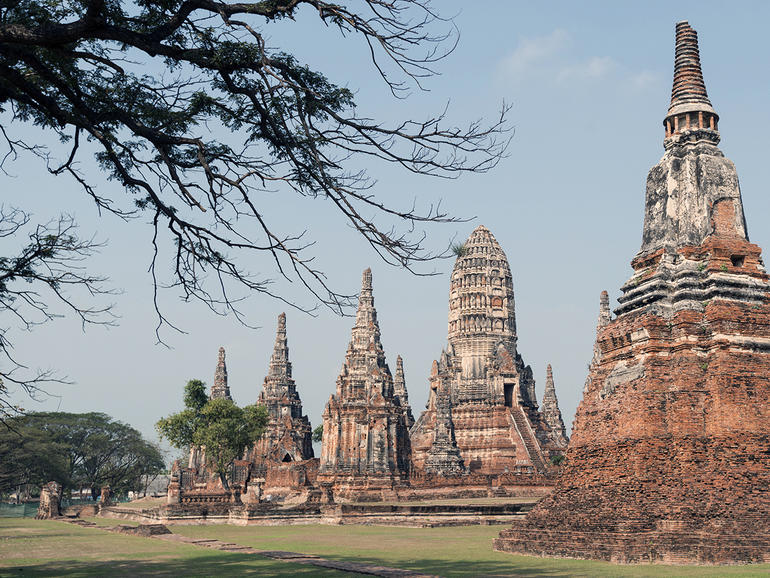
Wat Chaiwatthanaram is often considered the structure most emblematic of Buddhism’s influence on Thai society. Commissioned in 1630 by King Prasat Thong in the traditional Khmer style, the Buddhist temple sits adjacent to the ancient city of Ayutthaya, the capital of the Siamese kingdom during the height of its power and influence. After the siege led by the Burmese Army in 1767, Ayutthaya declined gradually.
For many years Wat Chaiwatthanaram lay a deserted ruin, subject to decay and looting, and encroached upon by illegal housing. In 1987, the Fine Arts Department of Thailand began conserving the site.
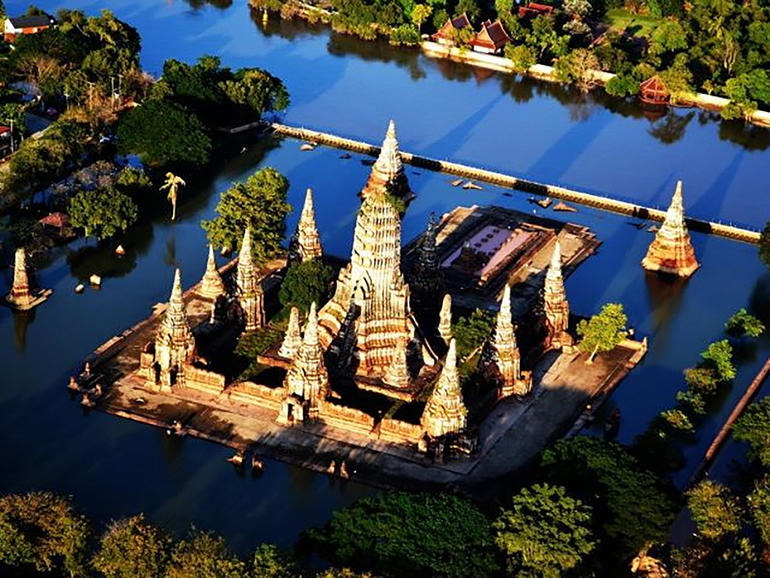
As is evident in other areas of Southeast Asia, increased rainfall in recent years has put greater pressure on heritage sites, and Wat Chaiwatthanaram’s proximity to the Chao Phraya River makes it especially vulnerable to persistent flooding. The unprecedented flooding episode occurred in 2011 inundated the fragile stonework and submerged significant portions of the sacred complex.
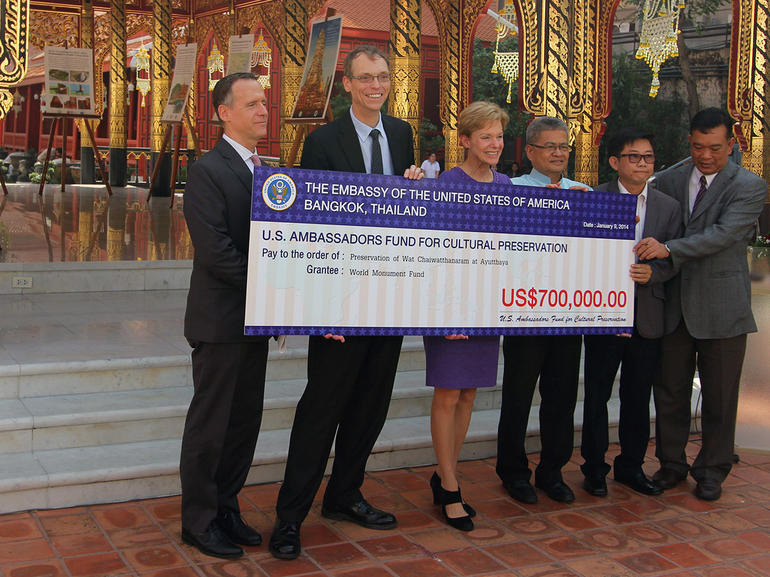
In 2012 World Monuments Fund received an award from the Ambassadors Fund for Cultural Preservation to work at Wat Chaiwatthanaram. At Wat Chaiwatthanaram, funding from the AFCP supported our work with the Fine Arts Department of Thailand to conduct technical surveys, conditions surveys of the materials of the temple and its decorative elements, and thorough documentation of the site, including new photography and laser scans of the whole site. The project team also designed the new south flood wall and produced a master drainage and flood plan.
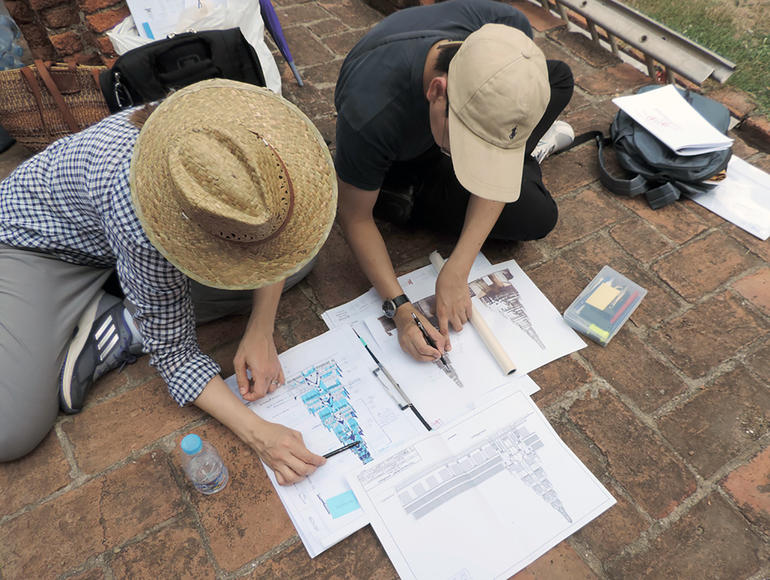
The ongoing conditions assessment maps the state of the structures to inform future intervention strategies.

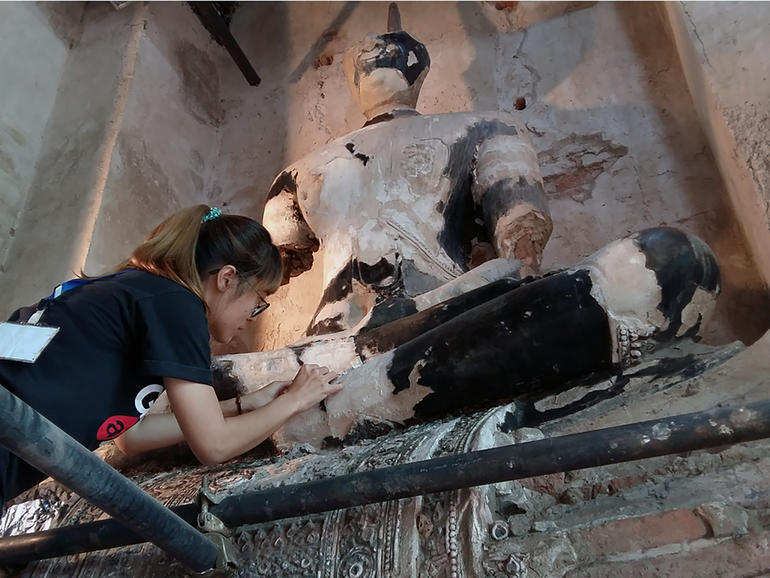
Recovering the original finishes
Conservators working with the Fine Arts Department noted that a number of cleaning agents and protective coatings were added to the decorative finishes during previous restoration efforts. This included the use of paraloid, a thermoplastic resin adhesive. Recent research shows that paraloid may discolor finishes over time. Conservators and technicians are working to remove these past treatments, stripping away layers of dirt in the process.
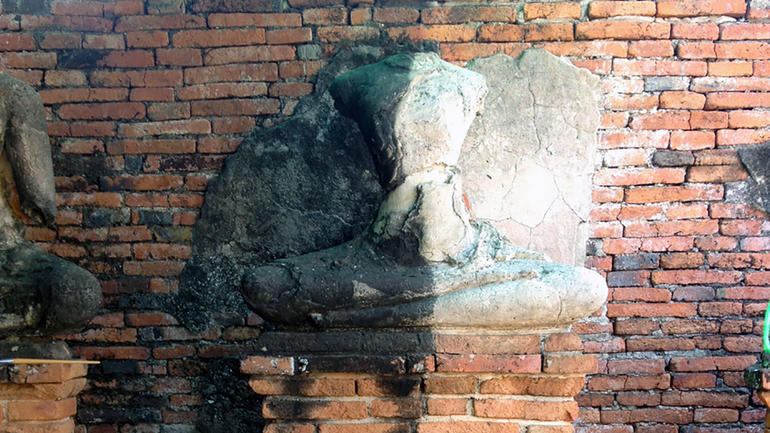
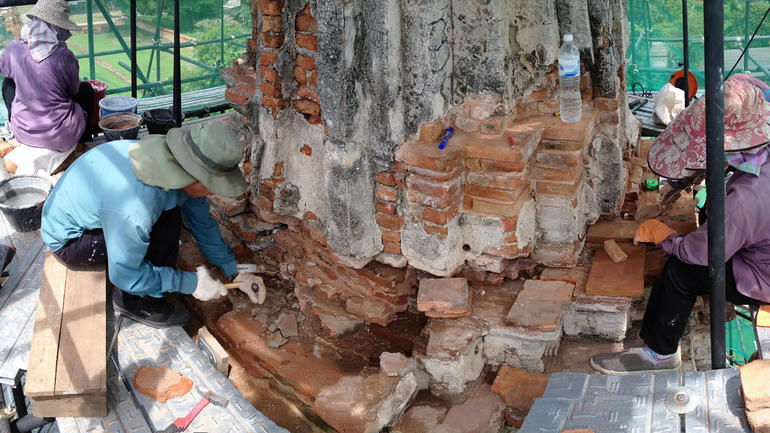
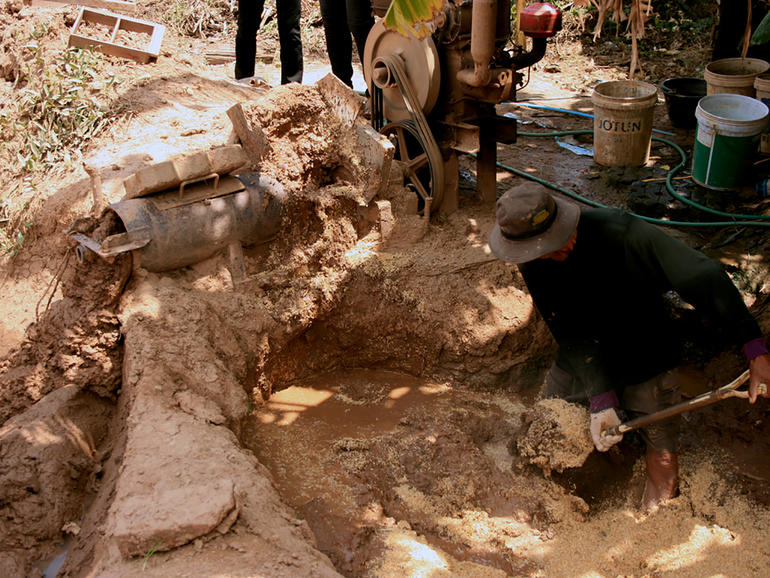
Brick conservation as well as grouting and cleaning of traditional stucco are few examples on the type of interventions performed on site.
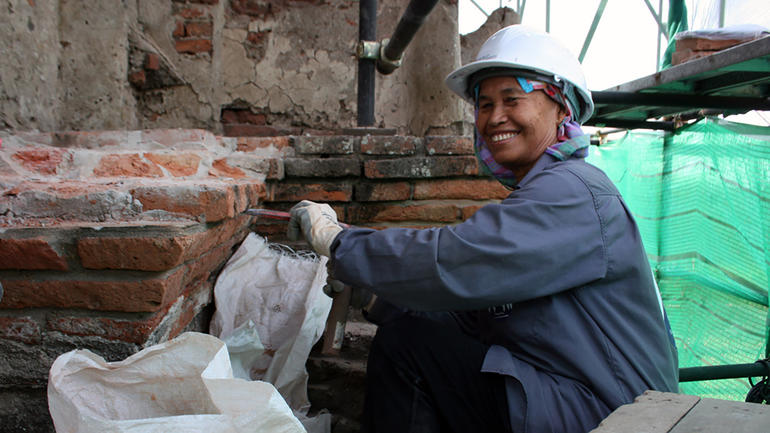
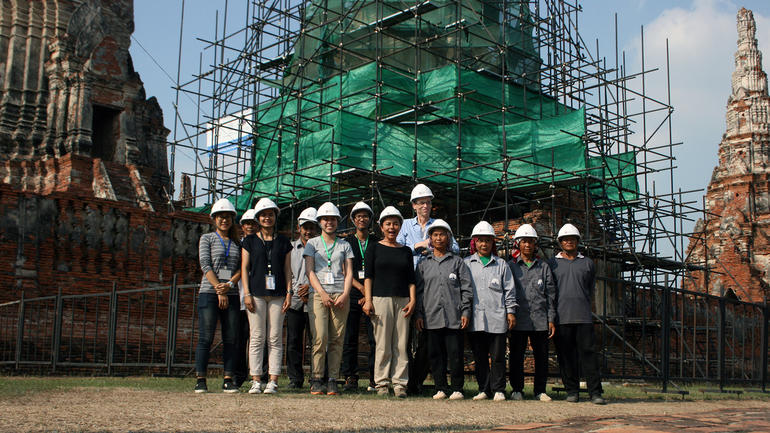
Wat Chaiwatthanaram is of economic value to the local population, attracting thousands of tourists every week. WMF’s ongoing commitment to conserving Wat Chaiwatthanaram has been possible thanks to our generous donors and supporters, most notably the U.S. Ambassadors Fund for Cultural Preservation, the U.S. Embassy in Bangkok, and the Robert W. Wilson Challenge to Conserve Our Heritage. In the aftermath of natural disasters, humanitarian needs come first, but restored cultural heritage is a powerful force in the recovery of communities during the years it takes to rebuild.
